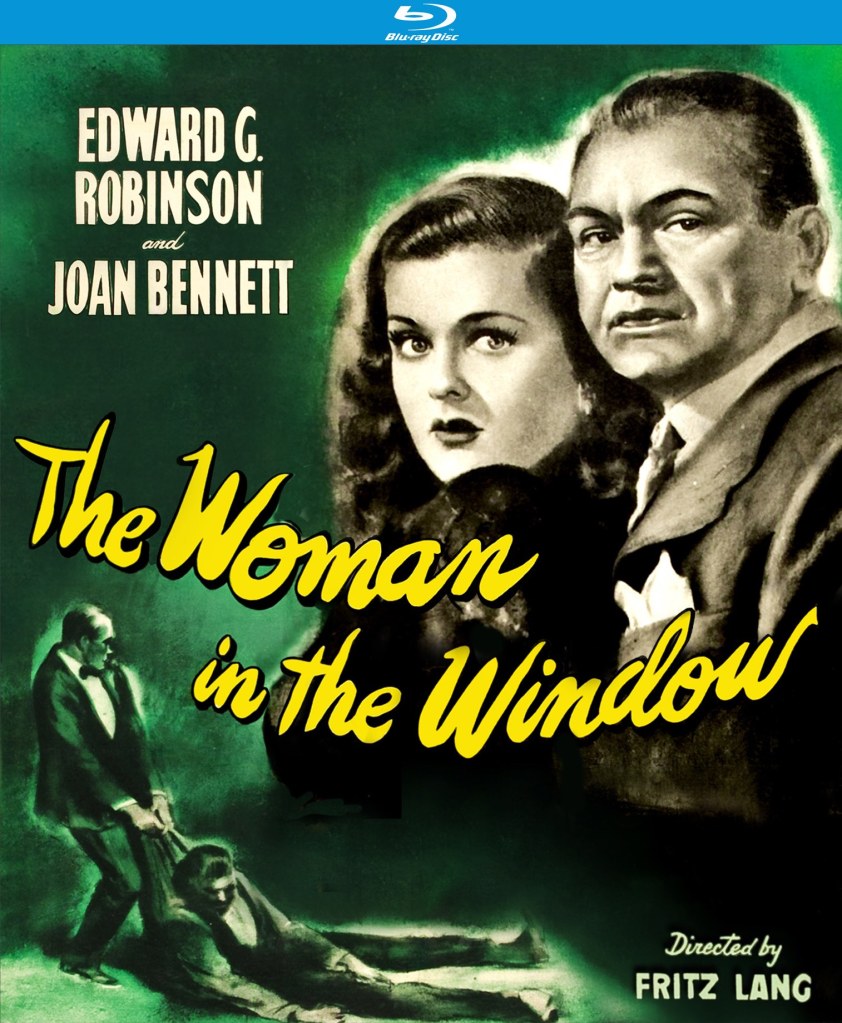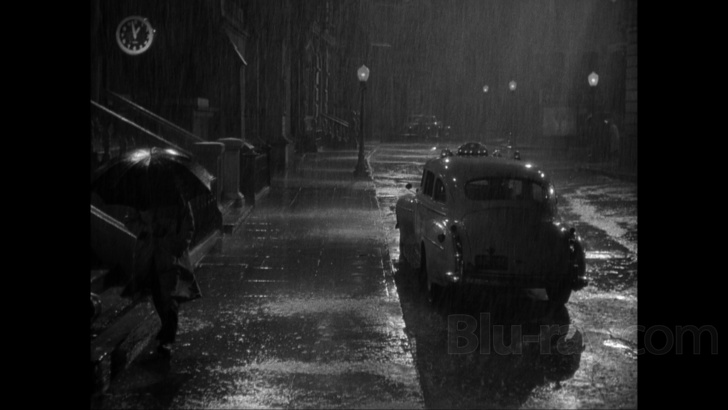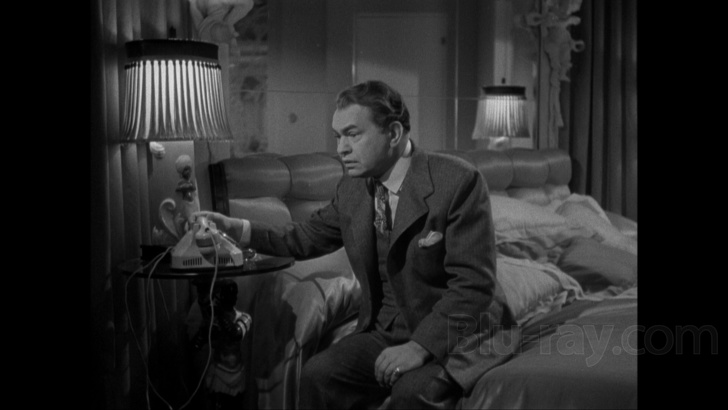
THE WOMAN IN THE WINDOW
THE SETUP
1944’s The Woman In The Window is one of the many Crime/Film Noir pictures made by Austrian-born filmmaker, Fritz Lang (Metropolis). Notorious for conceiving protagonists whom by and large were anti-heroes, Lang’s career saw some lofty heights with his groundbreaking work in more than one genre, like the aforementioned “Metropolis”, a dystopian Sci-Fi piece, along with other thrillers such as “M” and “Ministry Of Fear”. The Woman In The Window opens with the introduction of teaching professor Richard Wanley (played by the infamous Edward G. Robinson), whom after a few drinks with some friends, winds up crossing paths with a beautiful young woman named Alice Reed (Joan Bennett). Whilst contemplating straying from the nuptials made to his wife, Richard finds himself mixed up in murder and blackmail after a stranger arrives at Alice’s apartment. The film also stars Raymond Massey (East Of Eden), Edmund Breon (Dressed To Kill), Dan Duryea (Criss Cross), and Arthur Loft (Scarlet Street).

The Woman In The Window was penned by Nunnally Johnson, who wrote in excess of 60 screenplays over the course of a career that spanned as many years. The setup here is quite a simple one and it isn’t anything overly original, but it’s still effective. A conservative middle-aged man with the opportunity to perhaps pursue a younger mysterious woman inevitably results in complications. Temptation rearing its ugly head, as the allure of the beautiful Alice starts to become too much for Richard. The pacing here is much better than in some of the genres counterparts and the dialogue is firmer too. The key action set piece occurs before the end of the first act, and what follows, is the investigative portion of the film in which Richard’s friends, Frank Lalor (Massey) who’s a district attorney, and Michael Barkstane (Breon), a prominent doctor, discuss the evidence and particulars of the case in the midst of Richard’s presence. From there, the professor scatters in an attempt to cover all his bases. The dynamics of the trio’s interactions are where Johnson cleverly drip feeds the audience the information they need.

The audio track is pretty clean and Arthur’s Lange’s score is nice and jazzy. The film is quite well shot, the Blu ray transfer a clear upgrade on any previous hard copies that have been distributed over the years. Sure, there’s a few glitches in the edit, some warping, and a few lining issues here and there but the film is 75 years old so that’s to be expected. The Woman In The Window marks my introduction to Robinson, who was by all accounts a well respected and likable sort of fella. He delivers an honest and believable performance caught up in the wrong place at the wrong time, though some of the character’s dense on-going commentary about the crime seemed out of left field. Massey’s enthusiasm shines through via his characters case building methods, and Breon’s Barkstane appears to be the quirky one of the group who is usually good for an anecdote but seems to care little about the crime. Bennett manages to hold her own in what is a male-dominated world (par for the times I suppose), and her scenes with Duryea are some of the best in the film. Speaking of Dan Duryea, he brings an essence of Willem Dafoe like crazy to his blackmailing role of Heidt (I’m aware Duryea was making movies long before Dafoe was even a thought, but still). I don’t know if it’s in the diction or just the voice itself, but he had a hint of Vance (The Loveless) or Bobby Peru (Wild At Heart) about him.

I half expected this one to have aged substantially, especially after having similar sentiments about the earliest works from the master of horror, Alfred Hitchcock (anything pre 43′ hasn’t been great) but I was wrong in this case. There can be no denying that some of the specifics certainly lack credibility, most notably Wanley being invited to accompany Frank out to the crime scene let alone actually giving input as to how he thinks events unfolded (little do the men know that he knows perfectly well). An attorney simply wouldn’t have that sort of pull, only a police inspector (who coincidentally is on location as well and doesn’t seem to find it odd that Richard is there). I’d like to have seen some continuity consistency in relation to the murder. A sharp object is used yet there are no marks or incisions to the man’s back, nor are there any remnants of blood. The runtime is perhaps just a touch long and I was surprised that Heidt didn’t make himself known to Richard at any point, choosing to target Alice instead. Someone so greedy would’ve surely wanted the best of both worlds? The ending certainly wasn’t one that I saw coming, though I’m still not completely sure how I feel about it.

The Woman In The Window is a strong and memorable slice of 40’s film/noir. The technical elements are solid, the writing is natural, and the characterizations are pretty well-rounded. Robinson and Massey share some great moments together and the pieces of the puzzle come together in an entertaining fashion. The best performance here is Dan Duryea’s though, he makes the bargaining scenes most engaging. Lang definitely took some creative license with a few of the plot devices and the attention to detail is often a far cry from accurate (though that’s somewhat due to the times). There’s a part of me that feels as though the ending is a bit of a cop-out, but the other part sees the smarts of the cautionary tale approach. If you like this particular old style of crime/mystery, I can definitely recommend adding this one to your watchlist. You can check out the new updated trailer below!
My rating for “The Woman In The Window” is 6/10
